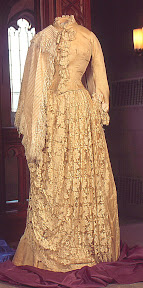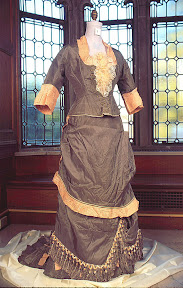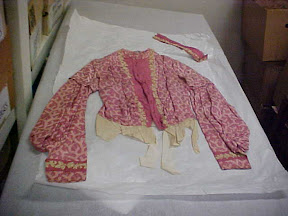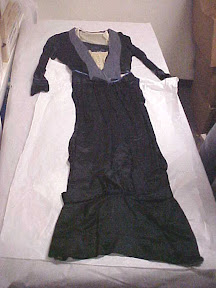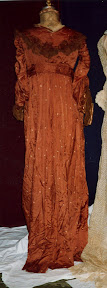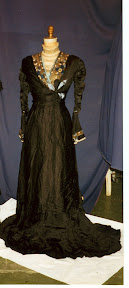Posted by Arden Kirkland under
labs | Tags:
chemistry,
labs |
1 Comment
Last Wednesday, several of us were able to make a field trip to Vassar’s Chemistry Department for a Fiber Analysis lab. Stuart Belli and Edie Stout generously offered to lead a lab with us. Prof. Belli began with a brief but very enlightening introduction to the principles of chemistry behind the instruments we would be using. After our weeks of working with our garments, we all had many questions in mind, and Prof. Belli’s talk and handouts helped greatly to answer many of those questions.
Next, we headed to the lab where we could use the infrared spectrometer. Each of us had a chance to work with the instrument and the computer that guides it. We tried several swatches for which we knew the content, and then we tried some unknown samples and compared them. This instrument is very helpful for non-invasive analysis of fiber types.
Then, we headed to yet another lab to use their new handheld XRF, which is what all of these pictures show. This instrument is also entirely non-invasive, and allows for the detection of heavier elements, particularly metals. We used this instrument to test several garments that we had brought along in a suitcase (wrapped in acid-free tissue and carried level, of course – they asked us if we were planning on staying for a while!). The sequins from one dress were identified as copper. The beads on another were identified as zinc. The metallic organza trimming the neckline of one dress was identified as copper.
It is important to explain what I mean when I say that both of these instruments are non-invasive – that means we don’t have to damage the garment by cutting out a sample to test. We can just insert a section of the textile right into the infrared spectrometer, or point the “ray gun” of the handheld XRF right at our garment. Other techniques for fiber analysis, from burn tests to microscopy, require that a sample is taken from the object.
We’re all eager to go back and use our new found skills with these instruments to work on our fiber analysis for other garments in the collection. Prof. Belli and Ms. Stout have encouraged us to come back and work on our own. We hope to schedule times that we can come in pairs or small groups, so that those who learned how to use the instruments can share their new knowledge with those who were not able to attend the initial workshop.
We want to send a big Thank You to Prof. Belli and Ms. Stout, not only for leading this wonderful lab in the first place, but also for sharing our excitement over this whole process, and for making us feel confident that we can work on this kind of analysis on our own.
